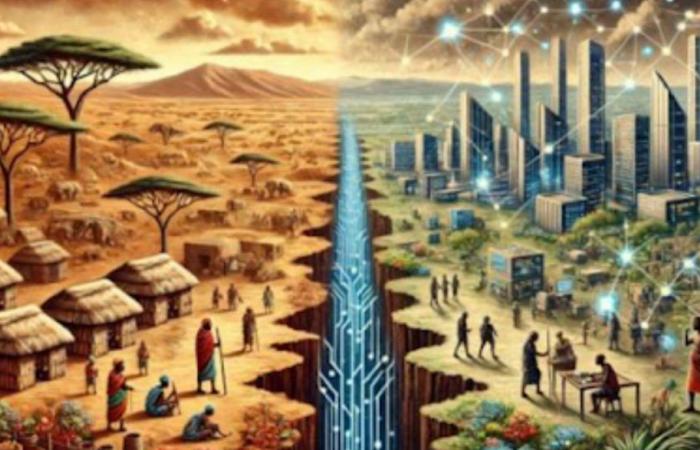
Verbatim. The profound transformations of the economic system result from different industrial revolutions, driven by the emergence of new technologies. These revolutions radically changed society and lifestyles. Artificial intelligence (AI) is the new technology, promising to disrupt the current economic system and usher in an era marked by the convergence of physical, digital and biological technologies. It is a continuation of the digital revolution, itself following the computerization of businesses that began in the 1960s, the peak of which was the emergence of information systems at the beginning of the 1970s.
Aware of the importance of AI and its central role in this new industrial revolution, states and companies are competing globally to dominate this technology. Global AI Market Expected to Reach $15.7 Trillion by 2030[1]. With the rapid democratization of this technology and its growing integration into economic activities, it could prove even more extensive on this horizon. The great powers, such as the United States, China and the European Union, are positioning themselves at the head of this dynamic and wish to maintain their domination.
AI and industrial revolutions: a new era
The fourth industrial revolution has begun, characterized by the use of advanced technologies such as artificial intelligence, robotics and the internet in production, logistics, procurement, marketing and customer service processes. Its impact on the economy is already being felt.
The four industrial revolutions (Source: visiativ.com)
The first industrial revolution took place in the mid-18th century, marked by the invention of the steam engine in Britain. It led to a shift from an agricultural economy to large-scale industrial production. This period was accompanied by increasing urbanization, the emergence of a new working class and the development of the railway, essential to opening up certain regions. This was also the era of the telegraph, a revolutionary communications tool.
The Second Industrial Revolution, which took place in the United States in the mid-19th century, was propelled by electrification, steel production, and the invention of the combustion engine. It marked the beginning of mass production and the explosion of international trade.
The Third Industrial Revolution, which emerged after World War II in 1945, saw the emergence of computers and the miniaturization of electronic components. This period was characterized by the automation of industrial processes and computer-based business management, leading to massive data production.
Today, the fourth revolution is underway, marked by the convergence of physical, digital and biological technologies. AI, robotization and blockchain are driving radical transformations in the industry. Industry 4.0, with its hyperconnected economy, is profoundly changing the relationship with work and the types of jobs. The boundaries between the physical and virtual world are blurring. The integration of digital technologies into physical objects and systems creates an interconnected ecosystem where these boundaries are significantly reduced.
Industry 4.0 involves the integration of advanced digital technologies into production processes and value chains. This will allow certain tasks to be automated, thereby reducing human operational risk while improving precision. The rate of automation will increase significantly with the increasing adoption of AI. Manufacturing jobs will tend to disappear and the skills sought will be adaptability, mastery of information flows, data management and innovation which represent real progress, but will everyone benefit?
A frantic race for AI
Between 2013 and 2023, the United States, China and France invested USD 335.2 billion, USD 103.6 billion and USD 8.3 billion respectively in artificial intelligence (AI), mainly in infrastructure and data governance. The United States remains a global leader, viewing AI as a priority for economic development and national security[2]supported by digital giants like Microsoft and Alphabet.
For its part, China has made AI a state priority, aiming to become the world leader by 2030[3] with an industry estimated at 150 billion USD[4]by integrating AI into strategic sectors such as health and defense.
The European Union seeks to catch up by creating a single data market and targeting 20 billion euros of investments per year by 2030, with a focus on key sectors such as health, robotics and agri-food, while facilitating access for startups to supercomputers and valuable data[5].
Technology: fracture catalyst
The economic gap between advanced economies with AI technologies and those in development is expected to widen, particularly for those who have not invested in this area, due to a digital divide. Developing countries, particularly in Africa, missed the digital shift or invested late in this sector. The continent lags behind in internet connectivity, essential for the development of industry 4.0, and suffers from a lack of digital infrastructure and suitable technologies, reinforcing its dependence on foreign suppliers.
To see the rest of the report click here https://www.cmais-strat.com/afrique_ia__fracture_numerique_plus_marquee/
Article19.ma





